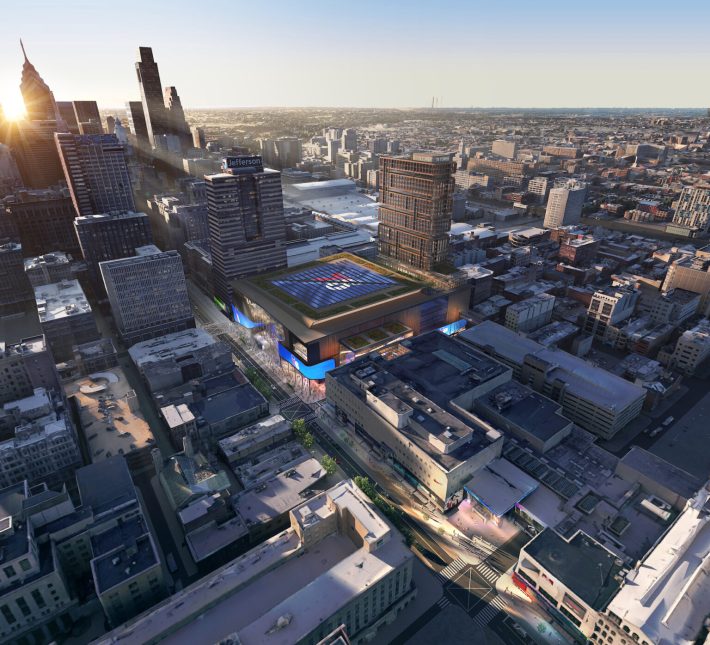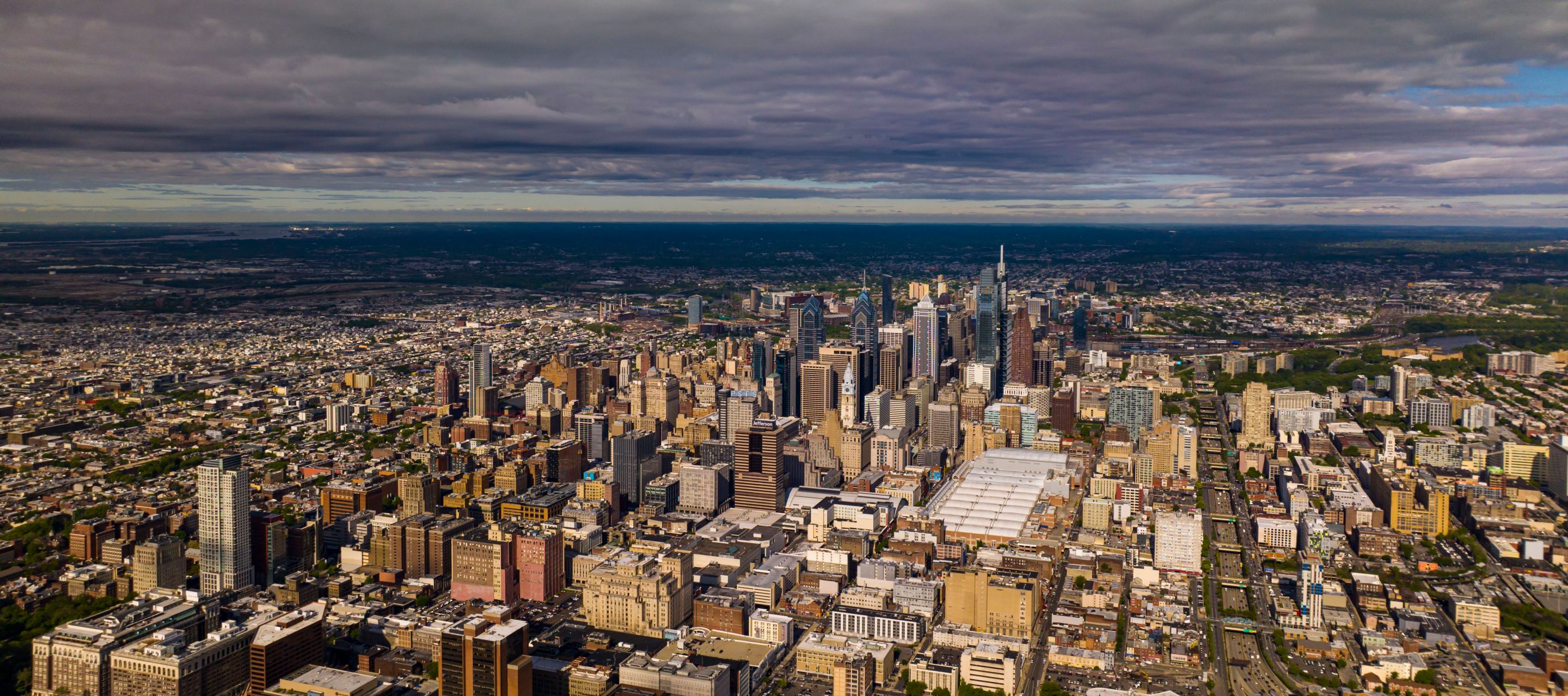Let’s get this out of the way: The video was weird. When Philadelphia Mayor Cherelle Parker announced in late September she was setting aside her months-long equivocation and going all in on a proposed new 76ers arena on the edge of her city’s Chinatown, she did so via a post that commenters immediately compared to an Saturday Night Live sketch: strangely framed shots and wooden line readings, with the mayor solemnly declaring that this was “the best financial deal ever entered into” for a Philly sports arena, with “hundreds of millions of dollars in new tax revenues” and “hundreds and hundreds of jobs.” Responding to months of vocal protests against the arena plan from those who say it threatens to wipe out adjacent neighborhoods, Parker declared, “To the people of Chinatown, please know that I hear you”—a sentiment only slightly undercut by the fact that at the moment the video went live, the mayor and her staff were only then meeting with handpicked community leaders to inform them of her decision.
Then again, everything about the 76ers arena saga has been weird. The perpetual Eastern Conference semifinalists play in a highly regarded building that is easily accessible by both highway and public transit, is one of the busiest in the nation, and just got a $400 million facelift that included new locker rooms and weight rooms. But they do so as a tenant of the Flyers, something that has peeved private equity goon Josh Harris ever since he picked up the franchise in 2011 for $280 million. (Forbes now estimates the Sixers’ value at $4.3 billion.) After engaging in such passive-aggressive tactics as printing the arena’s corporate-branded name on the court in the smallest possible typeface because he wasn’t getting a cut of the naming-rights money, in 2020 Harris dreamed up a project of his own for a waterfront arena district, only to see it immediately rejected by the city.
Harris then pivoted to the site of a failing mall in Center City. It had everything that an arena operator could want, with easy access by public transit and a site that cried out for redevelopment. The big drawback: The site also abuts Chinatown, which had already been through two decades of fighting against big city redevelopment projects, from a convention center (opened 1993, walling off Chinatown from the rest of Center City and requiring the demolition of 200 homes) to a Phillies stadium (proposed 2000, never built following neighborhood uproar).
As with the abortive Penn’s Landing, Harris and co-owner David Blitzer immediately declared they intended to pay for the $1.3 billion Chinatown arena without “any direct appropriation of city or state taxpayer money.” That “direct” was doing a lot of work: The Sixers owners would still be taking advantage of tax breaks that had first been bestowed upon the site to get the mall built. But because their goal here was less to cash in on public subsidies than to edge out the Flyers owners, Comcast Spectacor, as the big dogs in the local arena market, Harris and Blitzer were indeed willing to put up a significant chunk of change.
The result is a plan that on its face avoids some of the most headline-grabbing horror stories that have accompanied some other cities’ sports venue deals: no $2 billion price tags or beloved local bars uprooted by eminent domain. But does that make it, you know, good?
“Generally speaking, Harris is putting in more than the average,” said Geoffrey Propheter, a sports economist at the University of Colorado Denver who has extensively researched these kinds of tax-break deals. But that’s the wrong question, Propheter cautioned: What we really want to know is whether the Sixers owners would be putting in more money than other sports team owners who have built their own arenas. There, it’s far more common for private owners to kick in for construction costs and still pay their tax bills. The owners of the Golden State Warriors, Propheter noted, pay about $19.5 million a year in property taxes on their new Chase Center, whereas the Sixers owners would pay barely a quarter as much: “Compared to Chase Center, it's a terrible deal.”

There’s also the concern the arena could have dire ripple effects on its immediate neighbors. The cautionary tale here is that of Washington, D.C., which helped Capitals and Wizards owner Abe Pollin open a new arena in that city’s Chinatown in 1997. Within a decade or so, the project had driven out most of the area’s Asian stores and residents. It’s one of the oddities seen in sports venue developments across numerous cities: While studies have found that what they can do for neighborhoods is invariably overblown, what they can do to neighborhoods—by attracting the attention of the concentrated wealth ready to anoint a new up-and-coming district as ripe for fresh settlers—is often all too real.
The arguments in favor of the arena, meanwhile, have been straight out of the standard sports venue playbook. The Sixers owners contracted with Convention, Sports & Leisure, a consultant with a long track record of innacurate and misleading estimates, whose parent company Legends is owned by the New York Yankees and Dallas Cowboys. Legends submitted a report claiming that a new downtown arena would generate $22 million a year in new tax revenue, something that earned such reviews as “concocted PR document” (Kennesaw State University economist J.C. Bradbury) and “completely useless” (Propheter).
To add a stick to the supposed carrot, the Sixers flirted with Camden, N.J., earning a letter from New Jersey Governor Phil Murphy offering $400 million in tax credits, plus additional goodies to lure the team across the Delaware River.
Two weeks after Murphy’s letter became public, Parker released her video, opening with the line: “An agreement has been reached that will ensure that our Sixers are staying home.” The fine print followed a week later, with a flurry of paperwork that spells out everything including the rent the Sixers owners will pay the city for the site (a whole $10 for 30 years—yes, that’s 10 dollars—paid in advance so that no one has to make change), and a laundry list of $50 million in “community benefits” that Harris has promised to fund over the coming decades.
That $10 rent payment is part of a byzantine lease-back plan that Harris and Blitzer concocted to replace the mall’s original tax increment financing breaks, or TIFs, with something even harder for the average voter to wrap their brain around. Originally, the tax bill on the property was set to remain locked in at the level before it was developed as a mall—meaning even if the property’s value soared by virtue of, say, having a $1.3 billion arena sitting atop it, the tax bill would remain the same. Under the revised plan, the Sixers owners will give the land—though none of the arena revenues or naming rights money—to the city, which will make it fully exempt from property taxes.
The arena, which would be owned by the team, would be tax-exempt as well, for various super-obscure, Pennsylvania-specific technical reasons having to do with a series of nesting leases by various city agencies. Harris and Blitzer would, however, pay about $5 million a year in payments in lieu of taxes, or PILOTs.
If this is all extremely confusing, it’s meant to be, as most TIF and PILOT deals are designed to create Rube Goldberg financing schemes that are as hard as possible for laypeople to parse. Fortunately, Propheter has literally written the book on sports and property taxes, so he’s able to run the math to determine that the Sixers’ PILOT payments would represent a tax savings to Harris and Blitzer of between $96 million and $273 million in 2024 dollars, depending on what the team ends up spending on the project. “If the team ever publicly releases a detailed construction budget, I could narrow the estimate considerably,” he said.
As for the $50 million in community benefits, those are less impressive once you look at who would actually be getting the money and when. The bulk of the money wouldn’t arrive until 2031, and even then would include projects only marginally related to mitigating neighborhood impacts: $3 million to upgrade public transit to get fans to the arena is arguably less a community benefit than a team one; $7 million for new afterschool programs would be nice for Philadelphians as a whole, but less so for those driven out of the city by arena-development-spawned rent hikes. Only $6.35 million would be specifically targeted at the Chinatown neighborhood.
Mary Yee, who as a founder of Philly’s Asian Americans United has been at the center of Chinatown development battles for two decades, dismissed the community benefits as “piddling amounts that are blatantly insulting.” Mayor Parker, she noted, previously promised much of this funding regardless of whether the arena was built. “There is no way $6.35 million over the life of the project could do anything to mitigate the serious economic, transportation, environmental and socio-cultural impacts of the proposed arena," Yee said.
Parker’s office did not respond to requests for comment for this article.
Twenty years ago, two Philadelphia economic sociologists, Kevin Delaney of Temple University and Rick Eckstein of Villanova University, investigated numerous U.S. cities to determine which ones were quickest to approve sports subsidy deals. The answer, they reported in their book Public Dollars, Private Stadiums, was cities that had the strongest “growth coalitions” of political, business, and labor leaders. When all the major powers pulled in the same direction, it was nearly impossible for mere citizens to throw up roadblocks.
In the case of the Sixers arena, mere citizens have said they would prefer to see the city tell Harris and Blitzer to go pound sand. A recent poll—paid for by Chinatown groups, but with neutral enough wording that it seems unlikely to have skewed the results much—found city residents opposed to the arena plan by a more than three-to-one margin, figures that rose to more than four-to-one once they were given arguments for and against the arena.

In terms of people who count, though, there are few likely to raise serious questions about the arena now that the mayor is on board. The best legislative hope remaining is probably Mark Squilla, the local city councilmember for the proposed arena site, who initially promised to oppose the arena if his constituents didn’t want it, but later backtracked to just committing to a 30-day public comment period. There is always the potential for lawsuits, though those don’t have a great track record of success, as Oakland Athletics fans were recently reminded.
The handful of deals that have fallen apart at the last minute typically involve extreme circumstances, like the intervention of state officials (not likely here, as no state approval is required) or a change in city leadership, say thanks to a federal investigation into solicitation of bribes and illegal helicopter registration. Parker’s term runs through 2027.
“Once the letter of intent or memorandum of understanding is signed between the mayor and team, the city council nearly always approves it,” said Propheter, who is currently researching legislative and referendum voting patterns on sports deals for his next book. “I put the city council approving it at 100 percent.”
If so, it wouldn’t be the worst arena deal ever negotiated. Even $273 million in tax breaks is a relatively light public cost, compared to the billion-dollar-plus subsidy deals that the Buffalo Bills and Tennessee Titans owners have walked off with in recent years. But when the best you can say about a hugely unpopular deal that could destroy a 150-year-old neighborhood getting pushed through by the usual suspects is that other cities had it even worse, that’s some pretty cold comfort.





